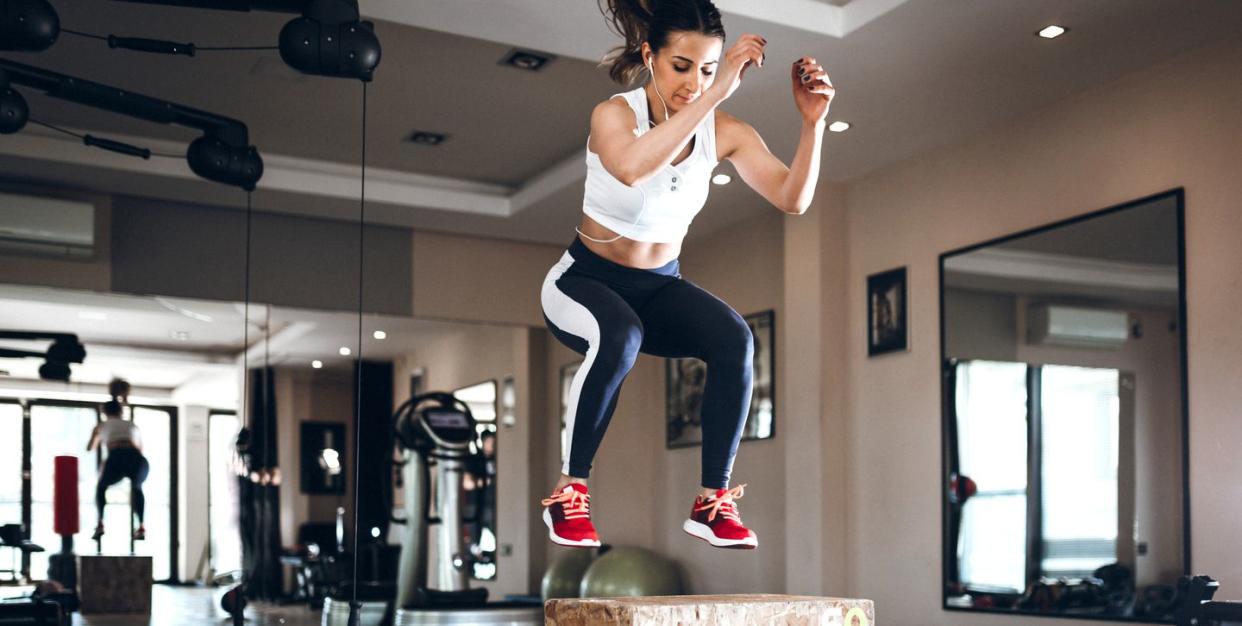Build Explosive Power and Athleticism With This Plyometric Workout

If you want to improve fitness and speed, you need to add more explosive, athletic movements in your workout routines. That’s where plyometrics come in handy.
Charlee Atkins, C.S.C.S., founder of Le Sweat, programs the explosive exercises, which use your muscles’ stretch reflex to build power and hone your coordination and athleticism, to ramp up the difficulty and introduce a different skill component to her clients’ workouts.
“In plyometric training, we are trying to produce maximal amount of force in a short period of time,” Atkins says. “The exercises typically involve putting quite a bit of stress on the involved muscles, joints, and connective tissues, so prescription will be different for every athlete, and recovery is essential.”
You might be more familiar with the obviously explosive plyos, like box jumps or med ball throws and slams, which are used to build power for all types of athletes. But this lower-impact body jump circuit from Atkins and training partner Roxie Jones, NASM-CPT, can be effective, too. The lower-impact moves will be more accessible for beginners than more dynamic plyos, and the moves still provide a ton of value for more advanced exercisers in need of a quick athletic tune-up.
[Want to fly up hills? Climb! gives you the workouts and mental strategies to conquer your nearest peak.]
Perform 100 contacts (or reps) of each exercise with little to no rest.
180 Jump Squats (Legs)
4-point Jumps (Agility)
Pencil Jumps (Calves)
If you’re concerned about getting enough activity in your workout, don’t worry. You can use plyos in tandem with your other parts of your fitness routine, specifically to complement opposing muscle groups if possible. “To maximize my training sessions, I like to combine these lower body plyometrics on my upper body resistance training days,” Atkins says.
('You Might Also Like',)

